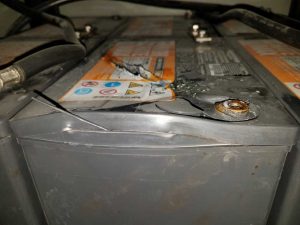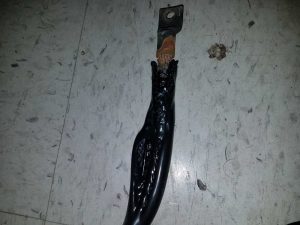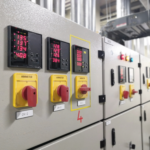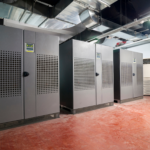Robert DeLauter, PE with contributions from Steve Keeney
Consider this: you have a solid preventive maintenance program for your Uninterruptible Power Supply (UPS) System’s Valve Regulated Lead Acid (VRLA) batteries. They are inspected twice yearly; all data is reviewed and a detailed report is sent with recommendations. The last report you received informed you the batteries are approaching five years old and you should budget to replace them.
Like any good steward of money, you get proposals from several vendors in hopes to keep the cost down. But should you make your decision based on cost alone? Are all vendors who sent proposals truly qualified to perform the work?
Recently we completed a preventive maintenance of a plant that had been replaced by the lowest bid vendor. During the visual inspection, the technician found a link had burnt. Upon a more detailed inspection, he noticed that the battery post was also melted.
The technician checked and found that the connection between the cable and the post had not been torqued correctly and was the only finger tight. When there was a power outage, and the batteries discharged, the connection became hot and melted the link; this is a very dangerous situation. Fortunately, in this instance, the issue was contained to the battery plant and did not result in a fire.
Incorrect battery installation is often difficult to detect and typically goes unresolved until an issue occurs. If unqualified personnel replace batteries critical steps could be missed. These missed steps may not show until there is a major problem like a load drop during a power outage or worse, a fire.
Proper UPS battery installation requires trained and qualified personnel following a detailed procedure. The following bulleted list is not exhaustive of all steps that should be taken for a proper battery install but it does lay a good framework.
- All batteries should be tested before they are installed; checking the open cell voltage and internal resistance or impedance. This insures the battery that is being installed is healthy and functional.
- The terminals should be cleaned of oxidization and a no ox grease applied. The oxidation that forms increases the resistance of the connection between the link and battery post. This resistance can cause heat and reduce the batteries performance.
- All connections should be torqued to the manufactures recommendations. Using a calibrated torque wrench will ensure the connections are tight and prevent the hardware from being over tightened causing damage to the battery post.
- Prior to reenergizing the battery system, it is very important to perform an inspection on the battery system. This inspection includes a visual inspection and a physical metering of the system. Voltage measurements should be taken to verify the overall battery system voltage is correct as well as its polarity. Voltage measurements to ground should be metered to determine that there are no ground faults in the system. A ground fault results in an unintentional flow of electricity to ground that can cause an arc flash, fire, damage to the system, trigger alarms, or a breaker to trip when it becomes energized.
- Both the technician who wired the system and a second technician should also perform a visual inspection before reenergizing the battery system. Each technician should inspect for loose connections, missing hardware (washers or lock-washers), and check to ensure the batteries were wired in the correct configuration. The second technician provides a double verification of proper installation and significantly reduces the likelihood of a mistake going overlooked.
- After the system has been reenergized, there are several more readings that should be taken to ensure proper functionality of the batteries. The overall battery voltage should be measured to determine the batteries are being charged to their optimal voltage. When batteries are either overcharged or undercharged, their lifespan can be compromised and can result in additional complications. Individual jar or cell voltage readings should be checked as well. Finding a battery that is not charging similar to others in the same system could be an early warning that there is an underlying issue or defect. The same can be said with checking the impedance with each individual battery. Manufactures provide thresholds and tolerances for each of their battery models and it is important to verify the batteries are within their expected range.
When choosing a vendor to replace your battery, it’s important to consider more than cost. A careful evaluation of all vendor qualifications should be a big component of your qualifying criteria. This additional upfront work will not only provide peace of mind, but will likely save money in the long term.







